The World of One-Block Wonders
Posted by Linda Bardes on Sep 28th 2017
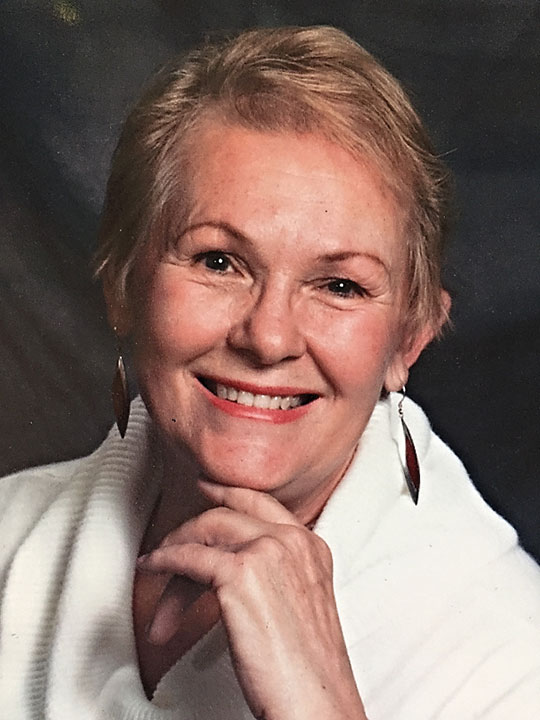
It was never my intention to become a quilter … until I saw a video of Bruce Seeds and his One-Block Wonders. I was instantly smitten with the possibilities of what a quilt could actually become. I purchased two of Maxine Rosenthal’s books, then created a practice quilt using an upholstery fabric—not a recommended weight for a quilt, although it turned out well. I titled it Joy/Luck. Little did I know that it would bring me such joy and luck.
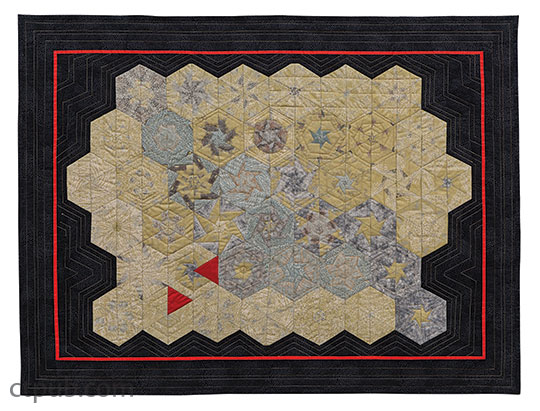
Then I made another practice quilt, and today I am still making practice quilts, because each fabric presents different and unique opportunities to explore techniques and push the boundaries of what a One-Block Wonder quilt is.
A One-Block Wonder is a quilt traditionally made with one fabric plus whatever borders, if any, the quilter decides to add. I found this one fabric/one quilt feature attractive, since I had no stash and didn’t even know what the term meant. An OBW is made up of hexagons nestled next to each other with no sashing, although there may be some added elements such as cubes. It’s a very simple concept.
Shortly after I made my second quilt, about four years ago, I looked on Facebook for an OBW group but didn’t find any, so I started the One-Block Wonder Quilt Forum. To date, there are close to 9,000 members all making beautiful, innovative, one-of-a-kind quilts and wallhangings. Our files and photo albums are virtual treasure troves of education and inspiration and, along with our members, continue to encourage quilters to try something new and innovative.
The diversity of quilts I saw in the group inspired me to contact Maxine Rosenthal, author of three OBW books, and suggest that there was enough material for a fourth book. “Why don’t you help me do it?” she replied, and that was how One-Block Wonders of the World was born.
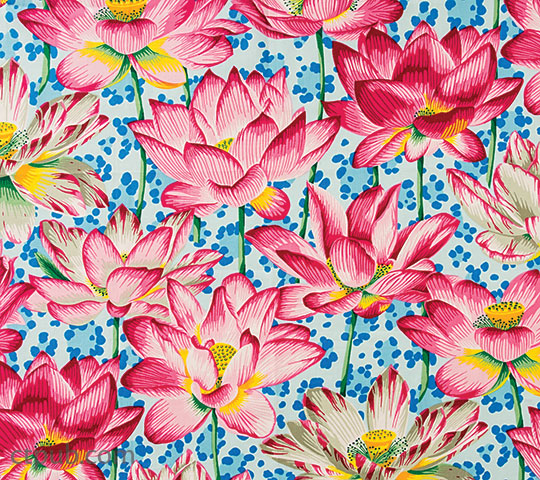
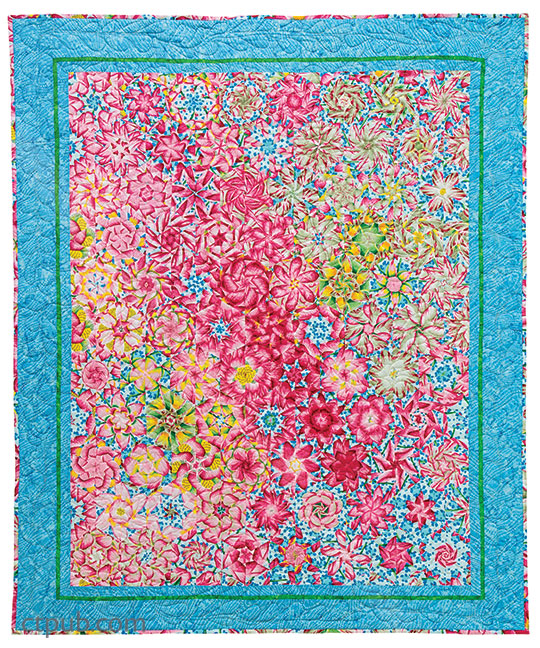
Petals on the Pond with Leopard Lotus by Phillip Jacob
If you ask a One-Block Wonder quilter what it is that attracts them and keeps them coming back to create another and then another OBW, most likely you will be told, "It's the mystery." Most of the designers can’t wait to cut into their fabric to see what secrets it’s going to give up. There are endless possibilities and choices that affect the finished quilt. Depending on where the repeat began as the fabric came off the bolt, your first strip and my first strip would be very different and would result in different finished hexagons. The width of the strips also affects the hexagons. Then, of course, there is the eye of the designer as she or he seeks to tell a story in the layout. If ten people bought the same fabric, each quilt would be totally different.
This fabric, Ten Moons by Sybil Shane for Robert Kaufman, took my breath away. I couldn’t wait to see what story it wanted to tell.
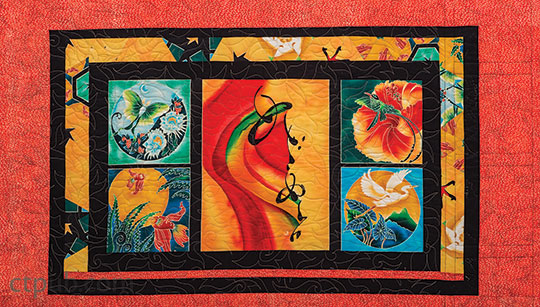
Here is the finished quilt, Tropical Sunset. It has gone to Kids Better World, a nonprofit, to be auctioned off.
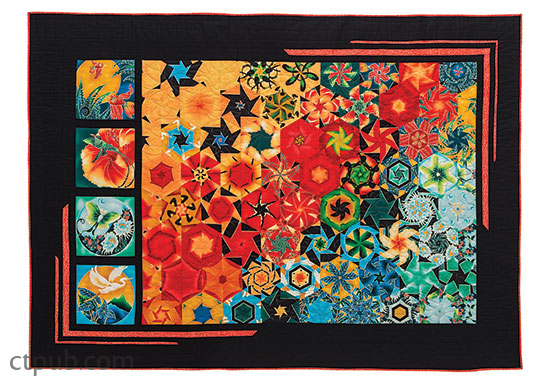
A One-Block Wonder is not a pattern. It is a process open to interpretation and innovation. Here’s the basic process. Start with a fabric that has a pattern which can be measured off in repeats, usually no smaller than 12", but more ideally 24", with large elements. Cut six individual repeats (or eight if you want to sew an octagonal quilt) and stack them on top of each other, matching like elements from top layer to bottom layer. From this stack of six layers, strips are cut. Originally, Maxine, the inventor of this process, used only 3 ¾" strips. Now it’s anyone’s guess what a quilter will decide to use. Recently we have been seeing strips as narrow as 1 ½" for small art projects. Personally those little triangles drive me to distraction.
From those strips, 60° triangles are cut across the entire strip. Then those stacks of six triangles, which are identical, are sewed into half hexagons and pinned together. You have now created a kaleidoscope block. These blocks are ready to be arranged and rearranged on a design wall until the designer feels the layout is finished.
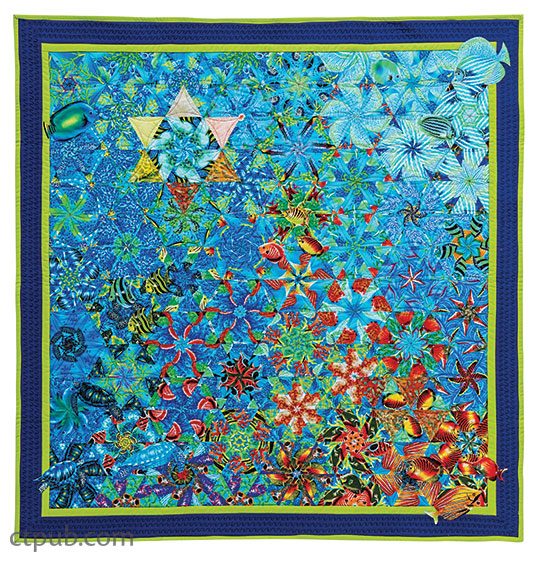
Designed by Kathy Gannon, Under the Sea, fabric by Michael Miller fabrics
This is an addictive process. Many quilters that create One-Block Wonders can’t stop. Jackie O’Brien and Bruce Seeds have created over 40 One-Block Wonders. What gives? Why continue to create the same kind of quilt over and over? It goes back to that word I shared with you early on—mystery. Quilters can’t wait to find the next cut of fabric to see what story they can tease out of it.







